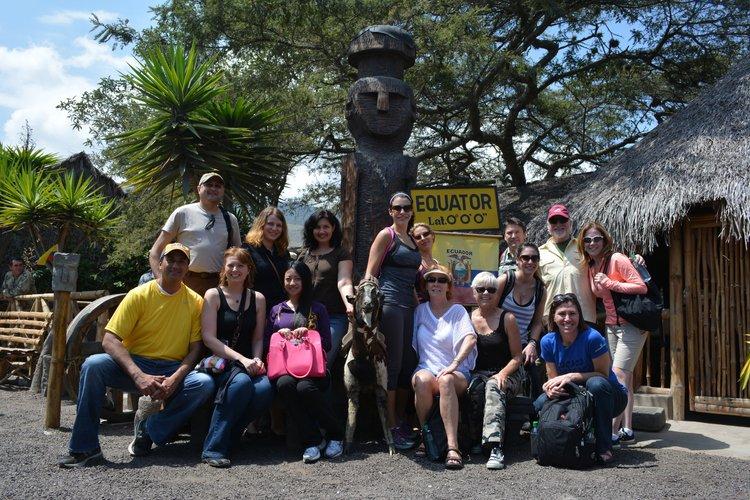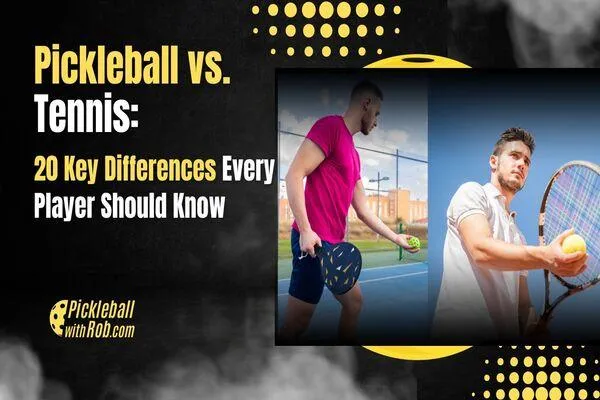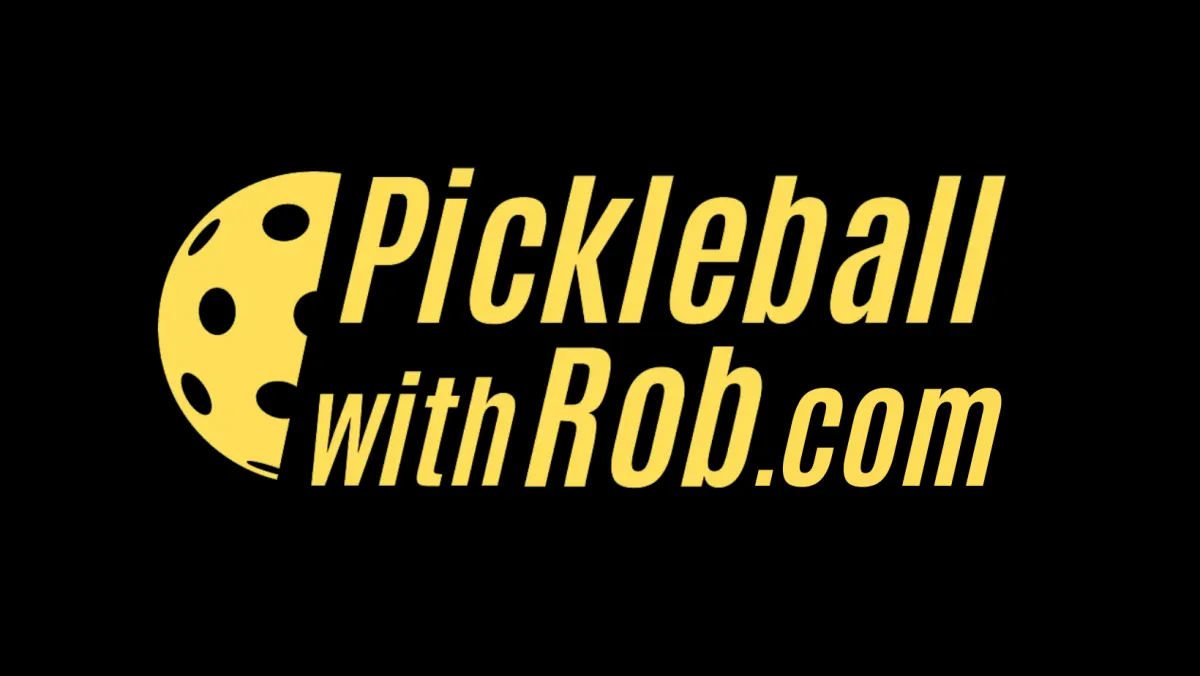WELCOME TO
PICKLEBALL WITH ROB
PLAY WITH PROS
Discover How We Help Pickleball Players Transform Their Game
& Provide the Ultimate Pickleball Fan Experience By Participating In
WORKSHOPS & VACATIONS WITH YOUR FAVORITE PROS
...all by learning the SECRET WEAPON: PICKLEBALLOS Blueprint.
Join our next vacation of
PICKLEBALL PLAYERS OF ALL LEVELS WHO WANT TO LEARN & PLAY WITH PROS
Watch The Video Then Scroll Down The Page To
See Top Pros Who You May See On Your Next Trip.
Watch The Video Then Scroll Down The Page To See Top Pros Who You May See On Your Next Trip.
Turn Volume Up When You Play This Video
A QUICK OVERVIEW OF WHAT TO EXPECT
Top pros have shared with me what has taken other players decades of playing to fully understand…
And I am just going to give it to you and help compress time…

AWAKEN YOUR PICKLEBALL POTENTIAL WITH WEAPONS AND A SOFT GAME WITH A FOCUS ON RAISING YOUR PICKLEBALL IQ TO ANOTHER LEVEL
Step #1
EnergizeYour Body

Pickleball players often have difficulty dealing with their emotions on the court.
This hinders them from reaching 100% of their true playing potential.
Some players suppress emotions until it leads to anxiety or decreased performance.
We provide “state-changing” tools to reprogram your game for enhanced skill and connection.
Reduce stress impacting focus and increase natural feel-good neurotransmitters.
Experience more focused play, stronger connections, and peak performance.
Enter a flow state in your game like never before.
Step #2
EvolveYour Mind

In the realm of pickleball, we recognize the mental aspect is crucial, comprising 30%, 50%, or even 90% of the game.
However, the pivotal question is: What proactive steps are you taking to enhance your mental fitness for optimal performance?
The moment you embark on the journey of mental fitness, you unlock the potential to elevate your game to unprecedented levels.
It's the transformative juncture where you discover the nuances of improvement by adopting a fresh perspective.
As this understanding takes root, you'll find yourself propelled toward enhanced mental fitness. The awareness of perceiving the game differently becomes a catalyst for your progression, guiding you to perform at your absolute best on the pickleball court.
By participating in our Pickleball Pro Workshops and Pickleball Pro Vacations, you'll eradicate restrictive beliefs and be equipped with the necessary tools.
This empowerment process will elevate your Mental Pickleball IQ, enabling you to chart your unique course for improvement immediately.
Step #2
EvolveYour Mind

Step #3
Execute WithYour Ability

Many times, we go and play Pickleball, but don't improve our Pickleball level or at a faster rate that we would like.
We get stuck making the same mistakes week after week.
With PICKLEBALLOS, you will discover how to drill properly with the right strategy and tactics to use.
When you grasp that your decisions on the court can drastically improve your game, it will be an eye awakening experience.
You will realize that you have had the answer all the time and we will help get you realigned.
You will walk away with a better structured game that makes you feel confident in your decisions and improved play.
Instead of being reactive, you become proactive.
Once you recognize the power of effective systems and making the right decisions, you're prepared to implement the PICKLEBALLOS, unlocking unparalleled achievements on the pickleball court.
By implementing the 3E Methodology it’s not just that you’ll be a better pickleball player, but also you’ll have true mastery on or off the court, over MIND, BODY and ABILITY…
MEET A FEW PICKLEBALL PLAYERS THAT HAVE ADOPTED THE SYSTEM AND INCREASED THEIR LEVEL OF PLAY AT A WORKSHOP OR VACATION…
“Wow, I learned so much. If you want to learn to play pickleball from beginner to intermediate, make sure you call Rob.”
“Wow, I learned so much. If you want to learn to play pickleball from beginner to intermediate, make sure you call Rob.”
Helen
“Rob transitioned my college tennis game to a pickleball game in a week…now I am playing with pros.”
“Rob transitioned my college tennis game to a pickleball game in a week…now I am playing with pros.”
Mario
“As a beginner he laid down the foundation step by step and it was so easy to learn and he gives you the reason why so it makes sense to learn the right way.”
“As a beginner he laid down the foundation step by step and it was so easy to learn and he gives you the reason why so it makes sense to learn the right way.”
Susan
“He helped me get my serves deep and hard and helped with a great control of the pace. He gets you amped up to play.”
“He helped me get my serves deep and hard and helped with a great control of the pace. He gets you amped up to play.”
Andrew (in the blue shirt)
“I liked Rob from my first phone call. He tailors the training to the person and has a great personality. I think you are lucky to work with Rob to help get you to the next level.”
“I liked Rob from my first phone call. He tailors the training to the person and has a great personality. I think you are lucky to work with Rob to help get you to the next level.”
Monica
“I have a tennis background and he helped with tactics and strategy to be able to beat better players. Rob is the right guy to team up with.”
“I have a tennis background and he helped with tactics and strategy to be able to beat better players. Rob is the right guy to team up with.”
Pablo (in the red jacket)
ACCELERATE YOUR MASTERY ON VACATION OR WORKSHOP WITH THE PICKLEBALLOS BLUEPRINT...
We've guided over 20,000+ players in accelerating beyond basic skills, 1000+ players in transforming into expert levels, and a select few in achieving elite status.
And what we've found is that it's all about focusing on the right systems at the right time to collapse the time of your learning curve and transform to a higher level, FASTER...


You're only one decision away...
Are you ready to join and TRANSFORM YOUR GAME FASTER AND WITH A PRO ON VACATION OR A WORKSHOP?
If so, apply for the PLAY WITH PROS below...
< EMBED CALENDAR >
Applying does NOT guarantee you will get in – you must FIND a way in.
Start the process and get on the waiting list by clicking above.
WHEN YOU MASTER YOUR GAME
WHEN YOU MASTER
YOUR GAME
YOU WIN MORE OFTEN...
YOU WIN
MORE OFTEN...
MEET YOUR GUIDES ON THIS JOURNEY...
The PICKLEBALL Mentors have taught thousands of students in person on vacation and at workshops. They will help you improve in the first 30 minutes and will help hold you accountable every step of the way to make sure you reach your peak performance...
Rob Fernandez Bucheli | Mind Mastery Mentor

Experience:
Lost 70 lbs. playing Pickleball
Rob and Staff Taught OVER 20,000 students
Interviewed the top pros to learn their best tips
Elite USPTA Certified Tennis Pro and USPTA Pickleball Pro
Education: Mechanical Engineer, Mental Fitness Expert
Michelle Esquivel | Body Mastery Mentor

Experience:
Active PPA and MLP Pickleball pro athlete
5.48 Doubles DUPR & 5.89 Singles DUPR
Ranking globally #17 in Singles
Ranked globally #19 in Doubles
Has a powerful charismatic style and passion
Radiates and is a fan favorite
Has directed Pickleball Academies and led Pickleball Vacations with Ben Johns, Collin Johns & Dekel Bar

Rob Cassidy | Ability Mastery Mentor

Experience:
Active PPA and MLP Pickleball pro athlete
6.46 Doubles & 6.35 Singles DUPR
Ranking globally #49 in Singles
Ranked globally #33 in Doubles
Has become a nationally recognized pickleball instructor and top player
Certified IPTPA instructor
Won the International Indoor Championships, New York State Championships, Hawaiian Open, The Toronto Cup Championships, and US Open
Has directed Pickleball Academies and led Pickleball Vacations with Ben Johns, Collin Johns & Dekel Bar
This is YOUR OPPORTUNITY to join a special Pickleball Group Who Are Committed to Unlocking Their Full Pickleball Potential on and off the court...
Do You Choose to Join Them?
No Catch. No Strings Attached. No Shenanegans. No Bullshit.
Here Is What You Typically Get On A Pickleball Vacation And Workshop

8 Day / 7 Nights
On Vacation
Most Meals
Transportation
Airport Transfers
Accommodations
All Tours & Activities
1.5 hours of Training with a Pro
1.5 hours of Open Play
PICKLEBALLOS Blueprint
8 Day / 7 Nights
On Vacation
Most Meals
Transportation
Airport Transfers
Accommodations
All Tours & Activities
1.5 hours of Training with a Pro
1.5 hours of Open Play
PICKLEBALLOS Blueprint

2-Day & 1-Day Intensive Workshops
Onsite Workshop
Featuring a Top Pro
All Levels
6 Hours of instruction each day
8:1 Student/Teacher Ratio
Players will be grouped with other players of the same level
Receive the PICKLEBALLOS Blueprint
IPTPA/PPR/USPTA Certified Pros
Learn Strategies and Tactics of Pickleball

2-Day & 1-Day Intensive Workshops
Onsite Workshop
Featuring a Top Pro
All Levels
6 Hours of instruction each day
8:1 Student/Teacher Ratio
Players will be grouped with other players of the same level
Receive the PICKLEBALLOS Blueprint
IPTPA/PPR/USPTA Certified Pros
Learn Strategies and Tactics of Pickleball

Start The Process By Clicking Below
BLOG

Pickleball vs. Tennis: 20 Key Differences Every Player Should Know
Introduction
Pickleball and tennis are two beloved racquet sports that share some similarities but also have distinct differences. Whether you're a seasoned player looking to expand your horizons or a newcomer trying to decide which sport to pursue, understanding the contrasts between pickleball and tennis is essential.
In this comprehensive guide, we'll explore the top 20 differences between pickleball and tennis, shedding light on everything from equipment and court size to gameplay and strategy.

Let's dive in and uncover what sets these two sports apart!
Court Size and Layout
Pickleball: Pickleball courts are smaller than tennis courts, measuring 20 feet wide and 44 feet long for doubles play and 20 feet wide and 22 feet long for singles play. The court is divided into halves by a 34-inch high net, with non-volley zones (kitchens) located near the net on both sides.
Tennis: Tennis courts are larger, measuring 78 feet long and 27 feet wide for singles play and 36 feet wide for doubles play. The court is divided into halves by a net that stands 3 feet high at the center and 3.5 feet high at the posts.
Equipment
Pickleball: Pickleball is played with a solid paddle made of wood, composite materials, or graphite. The paddle is larger than a tennis racket and has a shorter handle. Pickleball also uses a perforated plastic ball similar to a wiffle ball but smaller and heavier than a tennis ball.
Tennis: Tennis is played with a strung racket made of graphite, carbon fiber, or other materials. The racket has a longer handle and a larger hitting surface than a pickleball paddle. Tennis balls are larger and heavier than pickleballs, with a felt covering.
Serving Technique
Pickleball: In pickleball, serves must be made underhand and below the waist, with the server standing behind the baseline. The serve is delivered diagonally across the court, and the server must allow the ball to bounce once before returning.
Tennis: In tennis, serves can be made overhand or underhand, with the server standing behind the baseline. The serve can be directed anywhere within the opponent's service box, and there are no restrictions on where the ball must bounce after the serve.
Scoring System
Pickleball: Pickleball typically uses a rally scoring system, where points can be won by the serving or receiving team. Games are usually played to 11 points, and players must win by at least two points.
Tennis: Tennis traditionally uses a non-rally scoring system, where only the serving team can score points. Games are played to 4 points, with points being awarded as 15, 30, 40, and game. Players must win by at least two points, and sets are typically played to 6 or 7 games.
Speed of Play
Pickleball: Pickleball is generally played at a slower pace than tennis, with shorter rallies and less running required due to the smaller court size. This makes pickleball a more accessible sport for players of all ages and fitness levels.
Tennis: Tennis can be played at a faster pace, with longer rallies and more running involved due to the larger court size. This can make tennis more physically demanding, especially at higher levels of play.
Strategy and Tactics
Pickleball: Pickleball strategy often revolves around placement, accuracy, and shot selection, with players aiming to control the pace of the game and exploit their opponents' weaknesses. Strategies such as dinking, lobbing, and attacking the net are commonly used to gain an advantage.
Tennis: Tennis strategy encompasses a wide range of tactics, including power, spin, and placement, with players seeking to outmaneuver and outsmart their opponents. Strategies such as serving and volleying, baseline rallying, and approaching the net are employed to dictate play and win points.
Net Play
Pickleball: Net play is a crucial aspect of pickleball, with players frequently volleying and dinking at the net to set up winning shots. The non-volley zone (kitchen) restricts players from volleying within 7 feet of the net, adding a strategic element to net play.
Tennis: Net play is also important in tennis, with players utilizing volleys, overhead smashes, and drop shots to control the flow of the game. Unlike pickleball, there are no restrictions on where players can volley from on the court.
Grip and Stance
Pickleball: In pickleball, players typically use a continental grip for most shots, which involves holding the paddle with the knuckles of the index finger and thumb on the top of the grip. The stance is generally square to the net, with weight evenly distributed between the feet.
Tennis: In tennis, players may use a variety of grips depending on the type of shot being executed, including the eastern forehand grip, continental grip, and western backhand grip. The stance varies depending on the shot, with players often adopting an open or closed stance to generate power and control.
Ball Spin
Pickleball: Pickleballs are designed to minimize spin, with a smooth surface and uniform weight distribution. While players can generate some spin through the use of spin shots such as topspin and backspin, it is less pronounced than in tennis due to the ball's construction.
Tennis: Tennis balls are designed to maximize spin, with a felt covering that allows players to impart topspin, backspin, slice, and kick on the ball. Spin plays a significant role in shot execution and strategy, affecting the trajectory and bounce of the ball.
Footwork
Pickleball: Footwork in pickleball is focused on agility, balance, and quickness, with players moving laterally and diagonally to cover the court efficiently. The smaller court size allows for shorter, more controlled steps, reducing the need for long strides or sprints.
Tennis: Footwork in tennis is more varied, incorporating lateral movement, split steps, and directional changes to position the body for optimal shot execution. The larger court size requires players to cover more ground, requiring longer strides and faster sprints to reach the ball.
Court Surface
Pickleball: Pickleball courts can be played on a variety of surfaces, including indoor and outdoor courts made of asphalt, concrete, or synthetic materials. The surface texture may vary, with some courts featuring a smooth finish for faster play and others featuring a textured finish for better traction.
Tennis: Tennis courts are typically made of asphalt, concrete, clay, or grass, each offering unique playing characteristics. Clay courts provide slower play with higher bounce, while grass courts offer faster play with lower bounce. Hard courts offer a medium-paced surface suitable for all playing styles.
Serve and Return
Pickleball: In pickleball, the serve is delivered underhand and must land within the opponent's service court diagonally across the net. The return of serve is crucial, with players aiming to return the ball deep and low to prevent their opponents from attacking the net.
Tennis: In tennis, the serve is delivered overhand and can be directed anywhere within the opponent's service box. The return of serve is equally important, with players seeking to neutralize their opponent's advantage and gain control of the rally.
Ball Speed
Pickleball: Pickleballs are lighter and slower than tennis balls, with less velocity and bounce off the paddle. This makes pickleball more accessible to players of all ages and skill levels, as it requires less power and strength to control the ball.
Tennis: Tennis balls are heavier and faster than pickleballs, with greater velocity and bounce off the racket. This can make tennis more physically demanding, especially at higher levels of play where power and speed are essential.
Double Bounce Rule
Pickleball: In pickleball, the double bounce rule requires that the ball must bounce once on each side of the net before players can begin volleying. This rule encourages longer rallies and strategic shot placement, as players must wait for the ball to bounce before attacking the net.
Tennis: There is no double bounce rule in tennis, allowing players to volley the ball directly after the serve if they choose. This can lead to faster-paced rallies and more aggressive play, as players have the option to attack the net immediately.
Court Lines
Pickleball: Pickleball courts are marked with boundary lines for singles and doubles play, including baselines, sidelines, and non-volley zones (kitchens). The lines are typically painted or taped onto the court surface for visibility and clarity.
Tennis: Tennis courts are marked with boundary lines for singles and doubles play, including baselines, sidelines, service lines, and center service lines. The lines are usually painted or chalked onto the court surface and may vary in color depending on the court type.
Net Height
Pickleball: The net height in pickleball is 34 inches at the center and 36 inches at the posts, allowing for comfortable play and easy visibility. The lower net height reduces the risk of injury and encourages players to engage in more net play.
Tennis: The net height in tennis is 3 feet at the center and 3.5 feet at the posts, providing a barrier between players and facilitating shot placement. The higher net height requires players to generate more power and accuracy to clear the net with their shots.
Serve Speed
Pickleball: Pickleball serves are typically slower than tennis serves, with less emphasis on power and more focus on placement and accuracy. The underhand serve technique allows players to control the ball and initiate rallies without relying on excessive force.
Tennis: Tennis serves can be delivered at high speeds, with top players routinely exceeding 100 miles per hour on their first serves. The overhand serve technique allows players to generate power and spin, making it difficult for opponents to return the ball effectively.
Equipment Cost
Pickleball: Pickleball equipment is generally more affordable than tennis equipment, with paddles ranging from $20 to $150 and balls costing around $5 to $10 per dozen. This makes pickleball a cost-effective option for players looking to get started without breaking the bank.
Tennis: Tennis equipment can be more expensive, with rackets ranging from $50 to $300 or more and balls costing around $2 to $5 per can. Additional expenses such as court fees, lessons, and tournament entry fees can further increase the overall cost of playing tennis.
Community and Culture
Pickleball: Pickleball has a tight-knit and welcoming community, with players of all ages and skill levels coming together to enjoy the sport. Tournaments, social events, and leagues are popular among pickleball enthusiasts, fostering camaraderie and sportsmanship.
Tennis: Tennis also has a strong community and culture, with a rich history and tradition that dates back centuries. Players of all ages and backgrounds participate in tennis, with opportunities for competitive play, recreational activities, and social gatherings.
Accessibility
Pickleball: Pickleball is known for its accessibility, with courts available in parks, recreation centers, schools, and private clubs around the world. The smaller court size and slower pace make pickleball easy to learn and play, attracting players of all ages and abilities.
Tennis: Tennis is widely accessible, with courts located in parks, schools, clubs, and public facilities worldwide. While tennis can be more physically demanding than pickleball, players of all ages and skill levels can enjoy the sport with proper instruction and equipment.
Conclusion
In conclusion, pickleball and tennis are two distinct sports with their own rules, equipment, and strategies. While they share some similarities, such as using a racket and ball to score points, the differences between pickleball and tennis are significant and worth exploring.
Whether you're a pickleball enthusiast looking to learn more about tennis or a tennis player curious about pickleball, understanding these contrasts can enhance your appreciation for both sports.
So grab your paddle or racket, hit the court, and experience the thrill of pickleball and tennis for yourself!
FAQs:
Which sport is easier to learn, pickleball, or tennis?
Pickleball is generally considered easier to learn than tennis due to its smaller court size, slower pace, and simplified rules. However, both sports offer unique challenges and opportunities for skill development.
Can I play pickleball on a tennis court?
Yes, pickleball can be played on a tennis court with some modifications, such as using portable nets and tape to create pickleball boundaries. Many tennis facilities offer designated pickleball hours or courts to accommodate players.
Is pickleball suitable for all ages?
Yes, pickleball is suitable for players of all ages, from children to seniors. The sport's smaller court size, slower pace, and lightweight equipment make it accessible and enjoyable for players of all abilities.
How long does it take to set up a pickleball court?
The time required to set up a pickleball court can vary depending on factors such as court size, surface material, and available resources. On average, you can expect the setup process to take anywhere from 30 minutes to a few hours, depending on your level of experience and preparation.
How much does it cost to build a pickleball court?
The cost of building a pickleball court can vary depending on factors such as court size, surface material, and additional features. On average, you can expect to spend anywhere from $500 to $2,000 for materials and equipment to create a basic court setup.
References:
USA Pickleball Association. (n.d.). Official Tournament Rulebook. Retrieved from
United States Tennis Association. (n.d.). Rules of Tennis. Retrieved from
https://www.usta.com/en/home/organize/play-tennis/tennis-rules.html
Pickleball Central. (n.d.). Pickleball Court Dimensions. Retrieved from
Tennis Warehouse. (n.d.). Tennis Court Dimensions. Retrieved from
https://www.tennis-warehouse.com/learning_center/courts.html
Are you not sure of your pickleball level?
No problem!
Click the button below and answer this 60 second quiz to find out your RATING, get your ASSESSMENT with TOP TIPS and your pickleball BLUEPRINT for FREE!
100% FREE of charge!
Pickleball with Rob FAQs
What types of support can I expect?
You will join a private online group to stay connected and be able to ask your questions. Existing members and mentors will be able to provide support directly.
Is this a one-time event?
You can attend an unlimited number of onsite workshops and vacations. Of course, you will always be connected to the private online community group to always stay connected.
What makes PLAY WITH PROS different?
The PRO Experience, Members and THE PICKLEBALL.OS BLUEPRINT. You will have the right tools in your hand, learn LIVE from Pros and stay connected to the private online community.
What happens on my first pickleball workshop or vacation?
You learn the core 3E system to accelerate your training and transform your play the same day.
What results can I expect?
It depends on how much of a student of the game that you want to become. The more you put in, the more you get out.
Does my age or level of play matter?
Age and level of play doesn’t matter as much as how passionate you are about the game and your teachability index. The more you are willing to learn and apply is a better measure to gauge your success.

